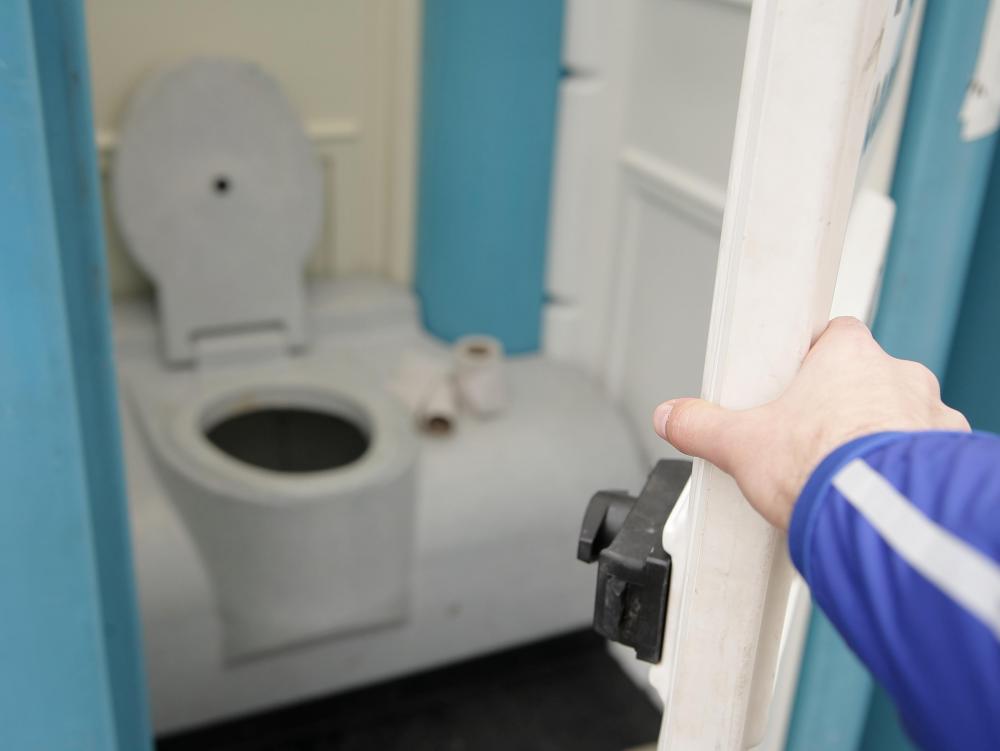At TheHealthBoard, we're committed to delivering accurate, trustworthy information. Our expert-authored content is rigorously fact-checked and sourced from credible authorities. Discover how we uphold the highest standards in providing you with reliable knowledge.
What is the Rectum?
The terminal part of the large intestine is called the rectum. It is located between the sigmoid colon and the anus. The whole Latin name of rectum is rectus intestinum, which means “straight intestine.” It is part of the digestive system whose main function is to store digestive wastes until the time a person is ready to defecate.
In humans, the rectum has a length of about 4 to 6 inches (10 to 15 cm). At the junction between the sigmoid colon and the rectum, it has a circumference of about 6 inches (15 cm). The circumference increases to about 14 inches (35 cm) at the rectal ampulla, which is its terminal portion. This ampulla looks like a pear or a balloon, and provides a large storage capacity.

The rectal walls expand as the rectum becomes filled with waste materials from the digestive system. This expansion stimulates the stretch receptors located on the walls, which in turn trigger an involuntary urge to defecate. During defecation, the increased pressure within the rectal walls forces the anus to open. Similar to the propelling forces that act on food in the rest of the gastrointestinal tract, peristaltic waves also act on feces. The peristaltic mechanism, coupled with rectal shortening, leads to successful defecation.

When a person does not follow the urge to defecate, the rectum responds by returning the waste material to the sigmoid colon, where additional water absorption occurs. If a person ignores the urge to defecate for an extended period, too much water is reabsorbed from the waste materials. The end results are hardened stools and difficulty of defecation, or constipation.

The rectoanal junction is called the anorectal line or pectinate line. Above this line are distinct parts of the rectal mucosa called columns of Morgagni, or simply rectal columns, which are able to accommodate contracting or dilating forces. The pectinate line is important in classifying hemorrhoids. If a hemorrhoid is located above the pectinate line, it is called an internal hemorrhoid, which is painless. A hemorrhoid located below the pectinate line is called an external hemorrhoid, which is often painful.

A condition called rectal prolapse or "mick" can occur that causes the rectal walls to collapse into the anus. Rectal prolapse occurs when the supporting ligaments and muscles weaken, and also when there is increased pressure inside the pelvis. Rectal prolapse occurs in association with old age, prolonged constipation, frequent diarrhea, pregnancy, and nerve problems. In severe cases, the whole rectum protrudes through the anus, which must be surgically corrected.
AS FEATURED ON:
AS FEATURED ON:















Discussion Comments
As a nurse I am often surprised by how many people think the rectum and anus are the same thing. This usually comes up when someone come to the clinic with anal fistula symptoms.
I really appreciate that Wisegeek articles are such a user friendly resource. I often refer patients to them, for some background reading on their condition.
@amysamp - The first thing you do is go to the doctor!! You could be quite a few things! I know for many many people it is an uncomfortable thought to have someone checking out such things, but I can tell you this much - it is common! So I hope you can find some comfort in that.
Since I have opened up about my hemorrhoids (to a few select friends) I have found that all walks of life get them from people who are pregnant, to weight lifters, to runners.
But I can't say it enough - go to the doctor - the rectum because of the waste involved is serious business.
If you do find out you have a hemorrhoid, I found two things to be very beneficial: 1) changing my diet & 2) using wet wipes instead of scratchy toilet paper.
I changed my diet by adding more fiber (think beans, vegetables, and fruit) and lots more water.
Since I have done this I haven't had a flair up, but I am keeping my fingers crossed because hemorrhoids are no fun!
@saraq 90 - I think I have a hemorrhoid as well. What did you do? I am so uncomfortable right now!
I can't believe I am saying this but I looked at some pictures of rectums with hemorrhoids online just so I could see how bad having a hemorrhoid might be. Luckily the pictures weren't as scary as I thought.
I was never ever interested in anything to do with my rectum until I had a hemorrhoid!
I was having all sorts of bowel issues and was beginning to thing I had more serious issues like bowel cancer or the prolapsed rectum.
So I went to a doctor and it turns out I had hemorrhoids (the external painful kind)! It turns out that I wasn't too crazy for thinking that I had other serious diseases.
One of my symptoms was bleeding and one of the symptoms of bowel cancer is bleeding as well. The difference is that the bleeding in my case was from a hemorrhoid and the bleeding in the case of colon cancer (another name for bowel cancer) is from an ulcer or other various affects of the cancer.
Post your comments